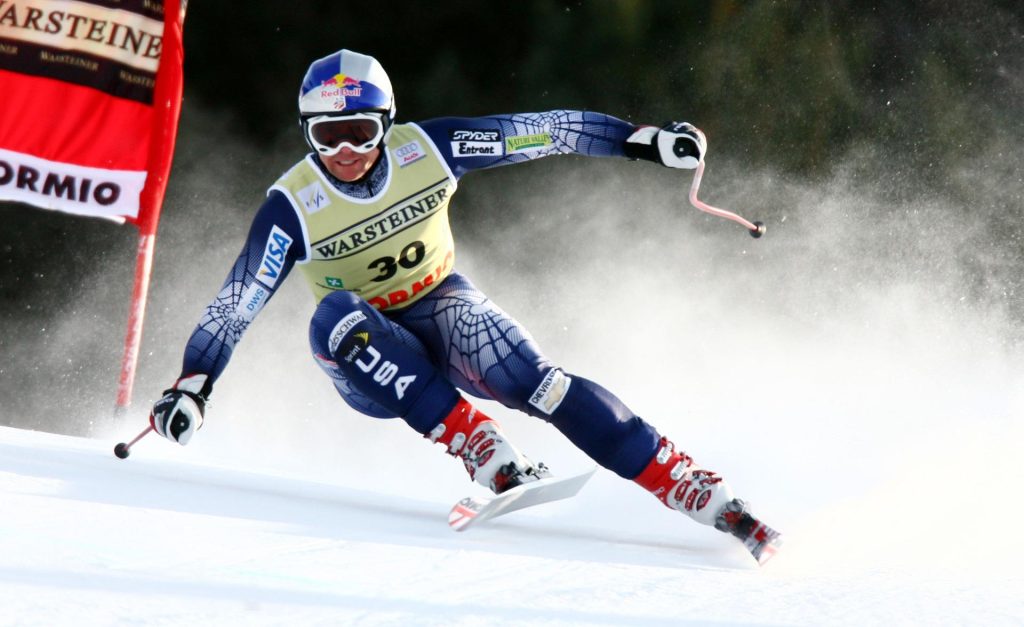Rahlves, memories of a 'Stelvio': "It's the toughest track in the world"

The former American athlete, winner of the Downhill in Bormio in 2002 and 2005, recounts memories and feelings thinking back to the legendary Valtellina slope. “The Stelvio is pure adrenaline. To become Olympic champion here is something more.”
For years, his figure has been featured in the communication campaigns of the Alpine Ski World Cup in Bormio: “Pure Adrenaline,” the slogan read, like the one that will be breathed again this year on the Stelvio slope on December 28(Downhill) and 29(Super-G).
He is Daron Rahlves, and in his career that adrenaline has tamed it to perfection: the American has made the Bormio Downhill his own on two occasions, in 2002 and 2005, and that is also why he is remembered well in Valtellina.
On the other hand, speaking frankly, it doesn’t matter how many years ago he hung up his skis (helast competed in 2010): the enthusiasm and excitement of those days are still there, as if it were yesterday. And his love for the Stelvio slope, the ‘creature’ of Oreste Peccedi and Aldo Anzi, can be felt in every word: “I think it is the most physically demanding slope in the whole World Cup, also because it is always extremely icy. It’s like it’s rough, and full of bumps. From the time you put your skis on outside the gate, there’s never any breathing room.”
“Already in the second turn,” Rahlves continues, “comes a major first jump: in this it reminds me of Kitzbühel, where it only takes a few seconds to get into the thick of the battle. Over the years some Downhill runs have become easier, Bormio has not: it has remained unique and untouched in its mythical and fascinating difficulty. The Stelvio is madness, the good kind.”
There are many memories associated with Bormio that animate Daron, starting with his triumphs. “One year I arrived in Bormio with brand new skis that the technical sponsor had prepared for me, asking me to try them in the first timed run: first place. At that time the starting numbers worked differently, so in the second run we tended to slow down a bit to get a better number. I, however, felt so good that I kept pushing: I got up in the final but it was not enough, still first. The Austrian coaches began to tell me that I had made a mistake, that the starting number would disadvantage me and I would not win. I replied that I would be fast anyway. Guess how it ended?”
The 1973-born Californian also participated in the World Championships on the Stelvio in February 2005 where he finished second, followed later by a bronze medal in the Giant. “It was probably one of the worst defeats I have ever suffered, I wanted that victory more than anything else. But Bormio has always been a fantastic challenge for me, and now it is preparing to host the men’s trials for Milan-Cortina 2026. It’s not often that Olympic medals are awarded on one of the most challenging slopes in the world: for our sport this is the ultimate, it means that Olympic golds will be the preserve of true champions.”
And off the track? Rahlves has something to say about that, too: “Bormio has a special flavor, partly because of its date I spent Christmas there more than once. One night I even went to Midnight Mass in the village church.”
THE PROGRAM OF A LONG WEEKEND OF SPEED
Just over a week separates us from the races at the Men’s Alpine Skiing World Cup stage in Bormio. On Thursday, December 26, and Friday, December 27, the world’s best skiers will test the Stelvio slope in time trials, ahead of the highlight of the weekend, namely the Downhill on Saturday, December 28, and the Super-G on Sunday, December 29. These will not be days of speed and adrenaline alone: there will be a festive air in Bormio with a rich program of side events, from the traditional Vitalini Speed Contest to music and various events at the World Cup Village in Piazza Walter Fontana.






